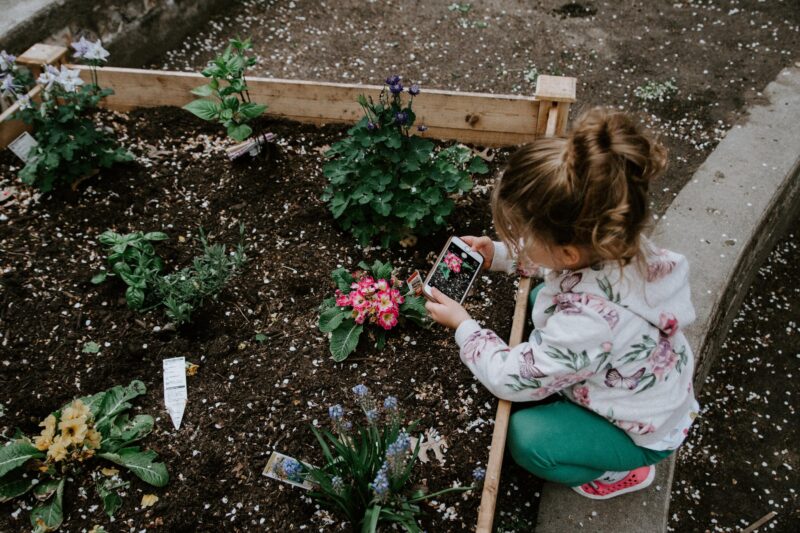In light of the technological transformations of the digital age, what do we think Froebel would say about technologies and play?
An article by Dr Lynn McNair
Play, be it digital or otherwise thrives best in an atmosphere of experimentation rather than conformity.
"There’s no simple way of defining ‘digital play’. Broadly speaking, it refers to children’s freely chosen activities with digital devices and smart toys.
In addition to play with digital toys, these activities could range from dancing along to a song on YouTube, or using an app for drawing, to pretending to talk to a distant friend or family member on a mobile phone that doesn’t work any longer[...].
Problem solving, self-expression and developing the imagination can all be associated with digital play" Lydia Plowman, 2021:21
Play, be it digital or otherwise thrives best in an atmosphere of experimentation rather than conformity. Digital technology may operate with screens such as voice assisted resources and smart toys. Additionally, action figures, soft toys or dolls can all now be bought either as traditional or digital play resources.
Consequently, children ARE engaged in a range of technologies (tv, laptops / computers, mobile phones, consoles, electronic resources / toys). The changing cultural landscape of modernity urges us to consider whether digital technology can be considered conducive play.
How would Froebel have viewed our cultural epoch?
Whilst it may be fair to say that some Froebelians do not view children’s ‘digital experiences’ as play, others may acknowledge that through technology, what we know to be play does, at least in a different form, emerge. In defining play, I turn to Tina Bruce for inspiration, who states:
“Play transforms children because it helps them to function beyond the here and now. They can become involved in more abstract thinking about the past, using the past, and into imagining the future, or alternative ways of doing things. It helps them to problem solve, and to experiment. It helps them to work out what they think and feel.”
Borrowing from Tina Bruce’s (2011) Twelve Features of Play, I have attempted to connect my observations and understandings of digital technology to the twelve features. Bruce (2011) offers a very useful framework for considering play in its broadest terms.
Using this multi-varient criteria to determine what constitutes play can be an interesting thought experiment, as through this lens we are able to categorise and conceptualise the highly diverse objectives and outcomes that a child may seek out in play generally.
Froebelian principles
Find out more about a Froebelian approach to early childhood education
Froebelian principles
...through digital mechanisms children can regularly and thoroughly enjoy themselves...
The first feature: children use first-hand experiences
If we look at the photo above, Maximos had taken part in this virtual session, in order to convey his own creation to his peers. Maximos takes command of the virtual domain, integrating material and immaterial practice.
Further, rooted in their everyday experiences, children readily mimic their parents on their digital device, whether it be the child who types alongside his dad, or uses a block to copy grandad on the phone. The way the children deploy the resources helps us understand how the child is interpreting their lived experiences with technology.
The second feature: highlights the rules children make up as they play in order to keep control
Children express the ritual and rules of the play such as who will play which particular role and how that role should be portrayed. One need only witness the ways in which a young child interacts with a movie - oftentimes during the video, or certainly after, play emerges: the digitally mediated video experience is interpreted and subsequently re-enacted, for example, there is not a parent or practitioner in the land who does not know the impact of Frozen! On-screen virtual characters become real in the play scenarios.
The third feature: children physically representing their play
Making and adapting props, making a camera out of box then walking around taking images, asking the adult ‘to smile’. This is valuable as it exemplifies that mimicry inherent in learning, as well as being a method in which children can further immerse themselves into the world of the imagination.
The fourth feature: children choose to play, and they cannot be made to play
This feature is as meaningful to digital play as it is to traditional types of play. If children do not want to do it, they will let it be known. Although perhaps obvious that children, as adults, cannot be instructed to ‘have fun’, it also highlights the fact that, indeed, through digital mechanisms children can regularly and thoroughly enjoy themselves.

...digital play offers the child multi-modal communication opportunities...
The fifth feature: children rehearse their future in their role play
I have observed children driving a motorised car, and /or exploring an app on space or farming, and then act out being a spaceman or a farmer. Whether it is like a kind of training for the future or simply an immersion in the present, these actions, like dreams, may prepare us for adulthood.
The sixth feature: children playing alone
Like traditional play, digital play offers the child multi-modal communication / opportunities, for example children may play digital games, as a solitary experience or shared experience with others. Additionally, children can often be seen alone, self-selecting to play with digitally augmented soft toys, chatting to them, cuddling them, as they would a favoured hard plastic doll.
The seventh feature: how children pretend when they play
One example worth sharing is that I noticed that a child dramatised events by turning a robotic vacuum cleaner into a game about space. This again highlights the inherent creativity of the child and their innate resourcefulness.
The eighth feature: children play with adults and other children cooperatively, in pairs or groups
Touchscreen devices with game apps can often be shared experiences, and opportunities for cooperative play.

The ninth feature: children may have a play agenda
Children can and do select a particular film, arrange their props around them whilst watching and singing along to a particular film / cartoon, often this has emerged from their own thinking and planning, my daughter Mischa, used to carry ‘her babies’ (soft toys) downstairs to watch a particular film, she subsequently explained what was happening to ‘her babies’. Children also encounter risk, when taking on a role of a superhero, or a scary character, whether the play is virtual or enacted at a later time.
The tenth feature: children wallowing in their play and learning
One thing about digital play is the way it captures children’s interests. This has been demonstrable for decades now, as young children have found themselves in front of televisions over the Western World, and now, more recently, it is the personal computer, with its increased interactivity complexity and abundance of media that has replaced terrestrial television as the immersive digital technology de jour.
The eleventh feature: how children try out their most recently acquired skilled and competences, as if celebrating what they know
This can be exemplified and known to every parent when their child presents a new catchphrase or soundbite from their favourite television show or movie. Or when children will enact the staged playfighting that they see in a film. Whether it’s a physical action or linguistic, children are always excited to convey their most recent learnings.
The twelfth feature: how children coordinate their ideas and feelings and make sense of relationships with their families, friends and cultures
As can be seen above, there is no doubt that digital play offer opportunities for heterogeneity and experimentation. Children can be more connected to a granny in Australia, who may read their grandchild a bed time story. Digital technologies offer us ways to converge, and learn about play in different countries, I am thinking here of our partnership with a nursery in Ghana, as our children virtually play with friends across the world.
Those who seek to dichotomise traditional play and digital play, I wonder if both can be connected?
What has been shown above is that children are engaged in a range of technologies. In light of the technological transformations of the digital age, what do we think Froebel would say about technologies and play?
‘Play is the highest level of child development. It is the spontaneous expression of thought and feeling. …It…constitutes the source of all that can benefit the child… At this age play is never trivial; it is serious and deeply significant’
(Froebel in Lilley 1967:84)
This article was first published here June 2021
References
Bruce, Tina (2011) Learning Through Play: For Babies, Toddlers and Young Children (Paperback) UK: Hodder Education.
Plowman. L. (2021) Digital Play - accessed 17 June 2021.
Plowman L. & McPake J. (2013). Seven myths about young children and technology. Childhood Education, 89 (1), pp.27-33. For those with a subscription the article is available at Taylor & Francis Online. An alternative version can be downloaded from Academia.
About the author
Dr Lynn McNair OBE is a founder leader of the Edinburgh Froebel Network, Head of the Cowgate Under Fives Centre in Edinburgh, Senior Teaching Fellow and Pathway co-ordinator of the MSc Ed (Early Childhood Practice and Froebel) and an endorsed Froebel Tutor for the Froebel Trust.
The Power of Play
Discover more in our series of articles from leading practitioners around the world - exploring ideas about children's play
Learn more

